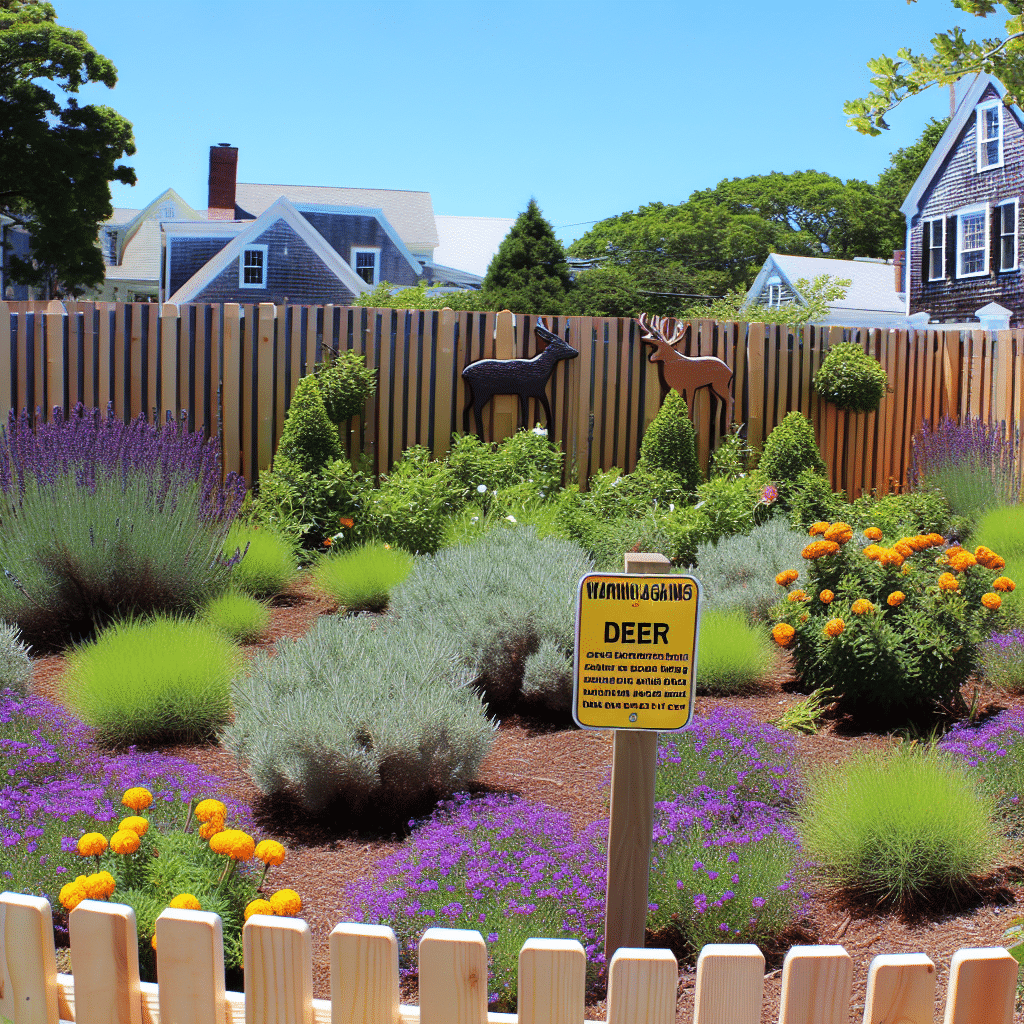Protect Your Prized Garden from Unwanted Guests
Stepping into your garden, you expect to see your hard work flourish; however, the sight of trampled flowers and nibbled leaves tells a different story. Deer, as beautiful as they can be in the wild, can wreak havoc in a domestic garden, often leaving a trail of destruction in their wake. It’s not just about the aesthetics either; the financial cost of replenishing your garden can quickly add up, not to mention the emotional toil of seeing your treasured plants ruined. This is why understanding how to keep deer out of your yard is critical for gardeners residing in areas like Kingston, RI. Immediate action can save your garden from becoming a repeat buffet for these graceful yet voracious visitors.
When deer make your yard their regular feeding ground, it’s time to look beyond the immediate damage and consider long-term strategies for coexisting with wildlife. Traditional methods, such as high fences, have their merits but also come with aesthetic and financial considerations. On the other hand, altering your planting choices to include deer-resistant varieties demonstrates an insightful approach to gardening, dovetailing functionality with horticultural finesse. Taking steps to understand the root of the problem – the deer’s search for food – can lead you to preemptive solutions that are both humane and effective. With expertise and the right information, you can create a yard that is less of a target and more of an unappealing detour for deer.
Of course, the idea isn’t to deter all wildlife from your garden – the goal is to maintain a healthy ecosystem while keeping particular pests at bay. There are a multitude of approaches to consider, from olfactory deterrents to landscaping tricks that stealthily protect your green investments. These methods encourage a balance, inviting birds and beneficial insects while discouraging deer. Tailoring a strategy that works for your unique garden is key; just as every plant has its place under the sun, every deterrent must be placed with purpose and knowledge. Stay tuned as we delve deeper into the strategies that will not only protect your yard but also enhance your overall gardening experience.
Understanding Deer Behavior for Effective Deterrence
Delving into the “why” behind deer invasions can greatly enhance your defensive tactics. Deer primarily enter gardens in search of food, especially during times when their natural habitat’s resources are low. If your yard offers a buffet of tender shoots and leaves, it becomes an irresistible target. Recognizing the deer’s patterns and preferences can guide you in creating a landscape that is less inviting and more daunting to these creatures. By adopting plant species known to be unattractive to deer, you intentionally design an environment that supports your cause.
A strong physical barrier is one of the most straightforward methods to ensure deer stay out of your property. While an eight-foot fence may seem excessive, it’s important to understand that deer have the ability to jump quite high. Integrating this barrier can be done in a way that still compliments your yard’s aesthetics, blending form with function. Fences need not be unsightly; with modern design options, they can actually add to the ambiance of your outdoor space. Moreover, correct installation and material choice will ensure longevity and efficacy.
Refining your strategy should also include considering repellents. While commercial repellents have varying degrees of success, their correct and consistent application is key. Homemade remedies, such as using soap or human hair, may offer some degree of deterrent but require more frequent replenishment. It’s essential to strike a balance between practicality and persistence when using repellents to maintain their effectiveness. To explore a variety of solutions tailored specifically for properties in Kingston, check out our services that complement your proactive steps in deer deterrence.
Sealing the Deal: Long-term Deer Deterrence
As we solidify our understanding of deer deterrent strategies, it’s essential we appreciate the importance of consistency. The use of repellents and physical barriers might require an initial investment of time and effort, but these measures can offer long-term peace for your garden. Upkeep, like reapplying repellents after rainfall or ensuring fences remain intact, is crucial. Integrating deer-resistant plants into your landscape should be seen not as a one-time event but as a facet of ongoing garden evolution. Consistency in these efforts will reinforce the message to the local deer population that your garden is no longer an easy target.
The aesthetics of your garden need not be sacrificed in the name of deer prevention. Intelligent landscape design can incorporate deer deterrent features that are natural and visually appealing. For example, layering plants with repellent properties throughout your garden can provide a beautiful yet functional setting. It’s about being purposeful with your choices, selecting deer-resistant plants that contribute to the visual story of your garden. The goal is a harmonious blend of functionality and flair, creating a space that delights both the eyes and the senses.
Ultimately, the tranquility of your yard and the health of your garden are reflections of your commitment to understanding and working with nature. If you’re looking for additional tips or need professional guidance on protecting your outdoor living spaces, our experts are here to help. We offer a comprehensive range of services tailored to your needs, whether it’s for residential or commercial properties, roofing, or emergency services. Remember, a deer-free yard isn’t an unreachable dream—it’s the result of well-planned actions and choices that align with nature’s balance.
Expert Strategies To Protect Your Yard
Tip 1:
To create a natural deterrent, strategically plant species that are unpalatable to deer like garlic, chives, and peppermint. These plants are not only deer-resistant but can also add to the aesthetic and aroma of your garden.
Tip 2:
Constructing strong physical barriers is key; an 8-foot-tall fence is recommended as deer are agile jumpers. Ensure the fence is sturdy and has no gaps that clever deer can exploit.
Tip 3:
Frequent application of commercial deer repellents is necessary, especially after rainy periods. Opt for repellents with natural ingredients to keep your yard safe for pets and children.
Tip 4:
Motion-activated sprinklers can serve as an effective, humane way to startle and scare off deer without causing them harm. Plus, they can help you keep your lawn watered!
Tip 5:
Engage in regular yard maintenance to remove any fallen fruits or attractive plants that can tempt deer. Keeping your yard clean reduces the food sources prompting deer to visit.
Your Top Deer Deterrence Questions Answered
What are the best natural methods to prevent deer from entering my yard?
Implementing strands of strong-smelling plants like lavender, garlic, and rosemary can naturally deter deer. Another effective measure is using homemade sprays made from ingredients like eggs, garlic, or hot peppers, which deter deer with their odor and taste.
Can deer-resistant plants really deter deer, and what are some examples?
Yes, deer-resistant plants can be quite effective; common examples include foxglove, Russian sage, and marigolds, which are known for their unpleasant taste or texture for deer.
What should be the ideal height for a fence to effectively keep deer out?
An ideal fence should be at least 8 feet tall, as deer are capable of jumping great heights when motivated by hunger or chased by predators.
How often should commercial deer repellents be reapplied?
Commercial deer repellents generally need reapplication every 30 days, sooner if you experience heavy rainfall, as water can dilute or wash away the repellent.
Are there any safe, homemade solutions for keeping deer away from gardens?
Yes, safe homemade solutions like soap bars hung around the garden or a spray made from blended hot peppers and water can effectively deter deer without harming them or the environment.



